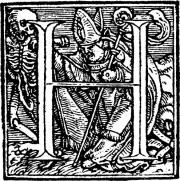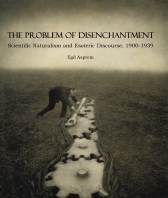It has been a while since my last post on Rupert Sheldrake’s Science Delusion, or, as it is called in the United States version (published by none other than Deepak Chopra Books – no doubt a token of proper peer-reviewed science), Science Set Free. For new readers as well as for old ones who need to refresh their memories, previous installations in the series are found here, here, and here. Without further ado, let me get started on an evaluation of the fourth dogma ascribed to science: “The laws of nature are fixed”. As in previous posts, evaluating this dogma (and whether it is one to begin with) will occasion a few short excursions in the philosophy and history of science. But this time we are also led, finally, to confront Sheldrake’s own key thesis, namely his theory of “morphic resonance”. Read on if you’re still curious.
Scientific delusions, or delusions about science? (Part four: on natural laws and resonating habits)
William Newman demonstrates alchemical transmutation – with a few notes on whiggishness
When I press the “publish” button for this post I shall immediately duck and take cover from allegations of whiggishness. The title of the lecture I post below, “Why did Newton believe in alchemy?” is precisely the sort of question-asking that has recently been criticised in the history of science blogging community in a recent upsurge of discussions about whig history and misapplication of categories in narrating or explaining science history. As Rebekah Higgitt wrote on teleskopos back in 2010, the “Newton as alchemist” trope seems to be a perennial surprise, and she suggested (I think convincingly) that the very fact that journalists but also scholars continue to introduce this topic precisely as a surprise – no doubt to attract the attention of their audience – is actually just perpetuating the mystery rather than leaving it behind and moving on. The problem is not only that we should start by acknowledging the state-of-the art established knowledge in the field (which in the case of Newton means at least departing from such works as Robert Westfall’s Never at Rest, and Betty Jo Teeter Dobbs’ The Janus Face of Genius) rather than by perpetuating the research questions of more than half a century ago. The problem is also that by playing the surprise card, we encourage people to ask questions that are poorly formulated and misleading in the first place. Questions such as, “was Newton a scientist or a sorcerer?” As Thony Christie will tell you, that’s a completely silly question, which cannot avoid distorting the material it’s supposed to clarify. To put it in histsci jargon, the question is too far removed from “actor’s categories” to make any sense.
Blind Spots of Disenchantment (3/3)
 The third and last part of my paper on the “Blind Spots of Disenchantment” focuses on the somewhat neglected concept of Weber’s 1918 “Wissenschaft als Beruf” paper: “the intellectual sacrifice”. It looks particularly at the Scottish Gifford Lectures’ attempt to promote a new “natural theology”, and suggests that this whole attempt defies Weber’s emphasis that science and religion are being/ought to be kept apart in a disenchanted modern world. It also includes the complete bibliography for all three parts.
The third and last part of my paper on the “Blind Spots of Disenchantment” focuses on the somewhat neglected concept of Weber’s 1918 “Wissenschaft als Beruf” paper: “the intellectual sacrifice”. It looks particularly at the Scottish Gifford Lectures’ attempt to promote a new “natural theology”, and suggests that this whole attempt defies Weber’s emphasis that science and religion are being/ought to be kept apart in a disenchanted modern world. It also includes the complete bibliography for all three parts.
Giants’ Shoulders #29: Esoteric Science Special
Heterodoxology is proud to present the twenty-ninth installment of your favourite History of Science Blog Carnival: The Giant’s Shoulders. This time featuring an Esoteric Science Special, dedicated to all those esoteric pursuits of superior knowledge; a celebration of all strange, alien, and counterintuitive methods that have been attempted to dissect, read, or tame nature’s secrets, from renaissance natural philosophy to present-day Grand Unified Theories – from the cleverly inventive, through the hopelessly megalomaniac, to the simply misguided.
Alchemy, and how to write about it: ESSWE thesis workshop
 As advertised before on this blog, the European Society for the Study of Western Esotericism (ESSWE) has been organising a thesis workshop on alchemy. It took place in Amsterdam on June 24; here is a short report.
As advertised before on this blog, the European Society for the Study of Western Esotericism (ESSWE) has been organising a thesis workshop on alchemy. It took place in Amsterdam on June 24; here is a short report.









